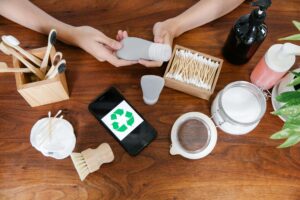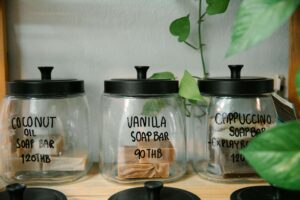Ingredient Consciousness

In recent years, the clean beauty movement has gained significant traction, with more and more consumers opting for products that prioritize safety, transparency, and sustainability. Central to the ethos of clean beauty is the avoidance of potentially harmful ingredients commonly found in conventional skincare and cosmetics.
But with an abundance of products on the market boasting labels like “natural” and “organic,” how can you decipher which ingredients are truly clean and which are best avoided? In this guide, we’ll explore some key ingredients to steer clear of when shopping for clean beauty products.
1. Parabens
Parabens are synthetic preservatives commonly used in skincare and cosmetic products to prolong shelf life by preventing the growth of bacteria and mold. However, research has raised concerns about the potential health risks associated with parabens, including hormone disruption and links to certain cancers. To err on the side of caution, opt for products labeled “paraben-free” or formulated with natural preservatives like vitamin E or grapefruit seed extract.
2. Sulfates
Sulfates, such as sodium lauryl sulfate (SLS) and sodium laureth sulfate (SLES), are surfactants often used in cleansers, shampoos, and body washes to create lather and remove dirt and oil from the skin and hair. While sulfates are effective at cleansing, they can also be harsh and stripping, leading to dryness, irritation, and disruption of the skin’s natural barrier. Look for sulfate-free alternatives that cleanse gently without compromising skin or hair health.
3. Synthetic Fragrances
Synthetic fragrances are ubiquitous in skincare and cosmetics, adding scent to products and enhancing the sensory experience. However, many synthetic fragrances contain a cocktail of chemicals, including phthalates, which have been linked to hormone disruption and allergic reactions. To avoid potential adverse effects, choose products scented with natural essential oils or labeled “fragrance-free.”
4. Phthalates
Phthalates are a group of chemicals commonly used as plasticizers to increase the flexibility and durability of plastics. They can also be found in fragrances to help them adhere to the skin. However, phthalates have been associated with a range of health concerns, including endocrine disruption, reproductive toxicity, and developmental issues. Opt for phthalate-free products to minimize exposure to these potentially harmful chemicals.
5. Formaldehyde
Formaldehyde and formaldehyde-releasing preservatives, such as DMDM hydantoin and imidazolidinyl urea, are used in some skincare and haircare products to prevent bacterial growth and extend shelf life. However, formaldehyde is a known human carcinogen and can cause skin irritation and allergic reactions. Look for products that are labeled “formaldehyde-free” or formulated with alternative preservatives.
6. Mineral Oil
Mineral oil is a common ingredient in skincare products, prized for its emollient properties and ability to lock in moisture. However, mineral oil is derived from petroleum, and concerns have been raised about its potential to clog pores, exacerbate acne, and hinder the skin’s natural detoxification process. Opt for plant-based oils like jojoba, argan, or coconut oil as clean alternatives for nourishing and hydrating the skin.
7. Silicones
Silicones are synthetic compounds used in skincare and haircare products to impart a smooth, silky texture and create a protective barrier on the skin and hair. While silicones can provide temporary cosmetic benefits, they can also trap debris, sweat, and bacteria, leading to clogged pores and potential skin irritation. Look for silicone-free formulations that allow the skin to breathe and function optimally.
8. Synthetic Colorants
Synthetic colorants, such as FD&C dyes and coal tar dyes, are often used to add vibrant hues to cosmetics and personal care products. However, many synthetic colorants are derived from petrochemicals and may contain heavy metals and other contaminants. To minimize exposure to potentially harmful ingredients, opt for products colored with natural pigments and botanical extracts.
9. Ethanolamines (MEA/DEA/TEA)
Ethanolamines, including monoethanolamine (MEA), diethanolamine (DEA), and triethanolamine (TEA), are used in skincare and haircare products as emulsifiers, pH adjusters, and foam boosters. However, these compounds can react with other ingredients to form potentially harmful nitrosamines, which are known carcinogens. Choose products that are free from ethanolamines to reduce the risk of exposure to these harmful compounds.
10. Triclosan
Triclosan is an antimicrobial agent commonly used in antibacterial soaps, hand sanitizers, and toothpaste to kill germs and prevent bacterial growth. However, triclosan has been linked to hormone disruption, antibiotic resistance, and environmental contamination. To support your health and the environment, opt for triclosan-free alternatives and practice good hygiene with regular handwashing using soap and water.

In conclusion, navigating the world of clean beauty involves being mindful of the ingredients used in the products you choose. By familiarizing yourself with common harmful ingredients and opting for clean alternatives, you can prioritize your health and well-being while supporting brands that share your commitment to safety, transparency, and sustainability. Remember, knowledge is power – empower yourself to make informed choices for a cleaner, healthier beauty routine.

